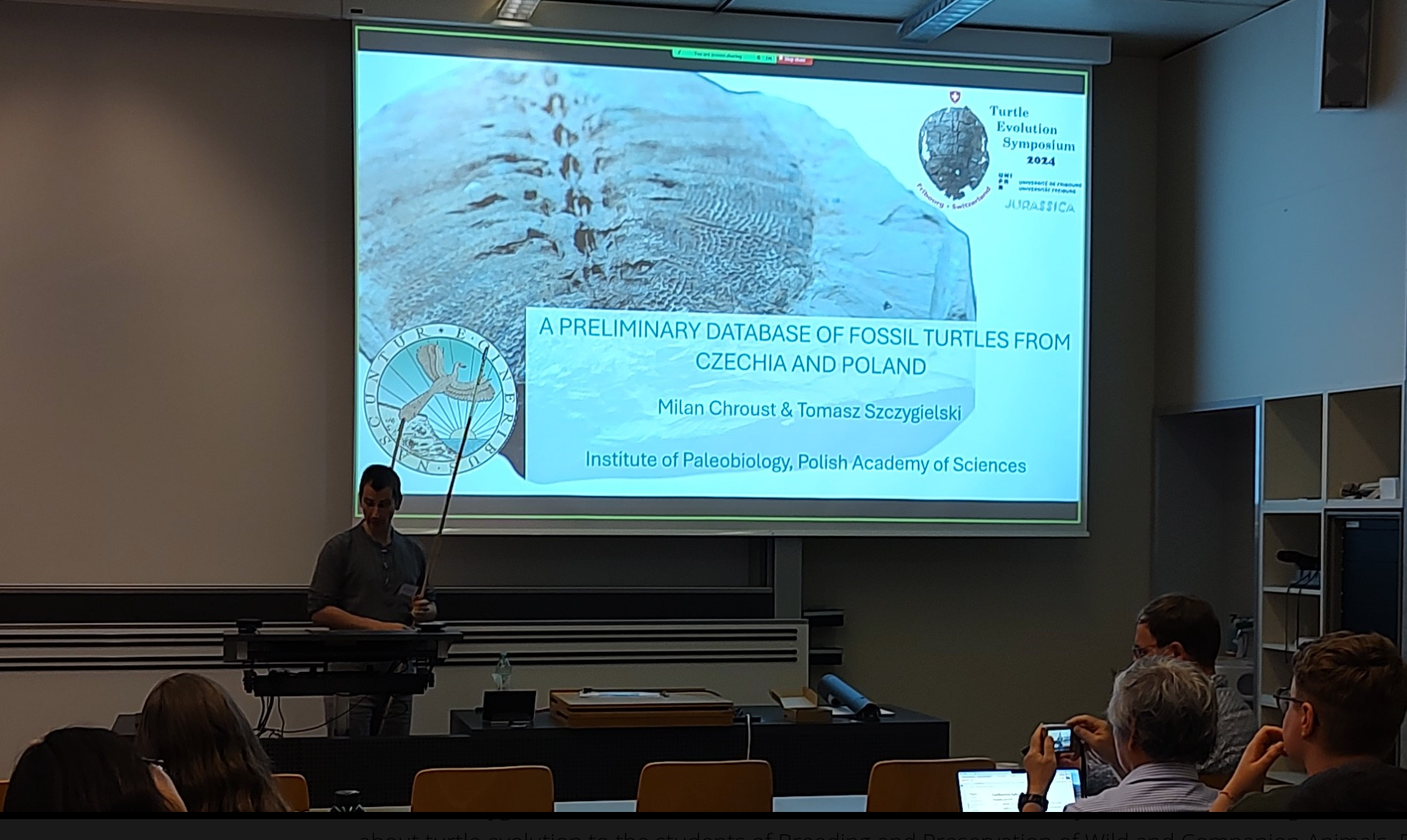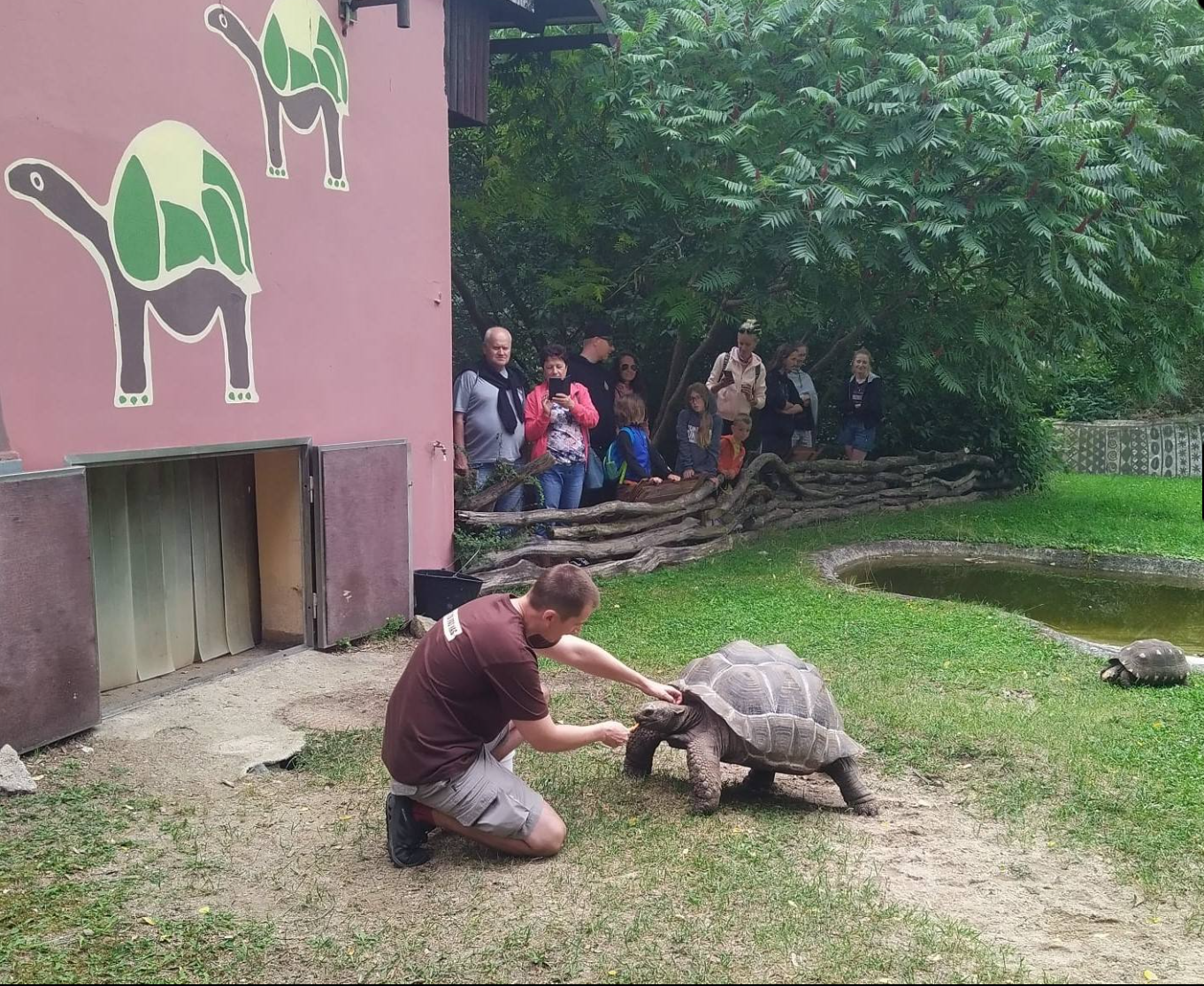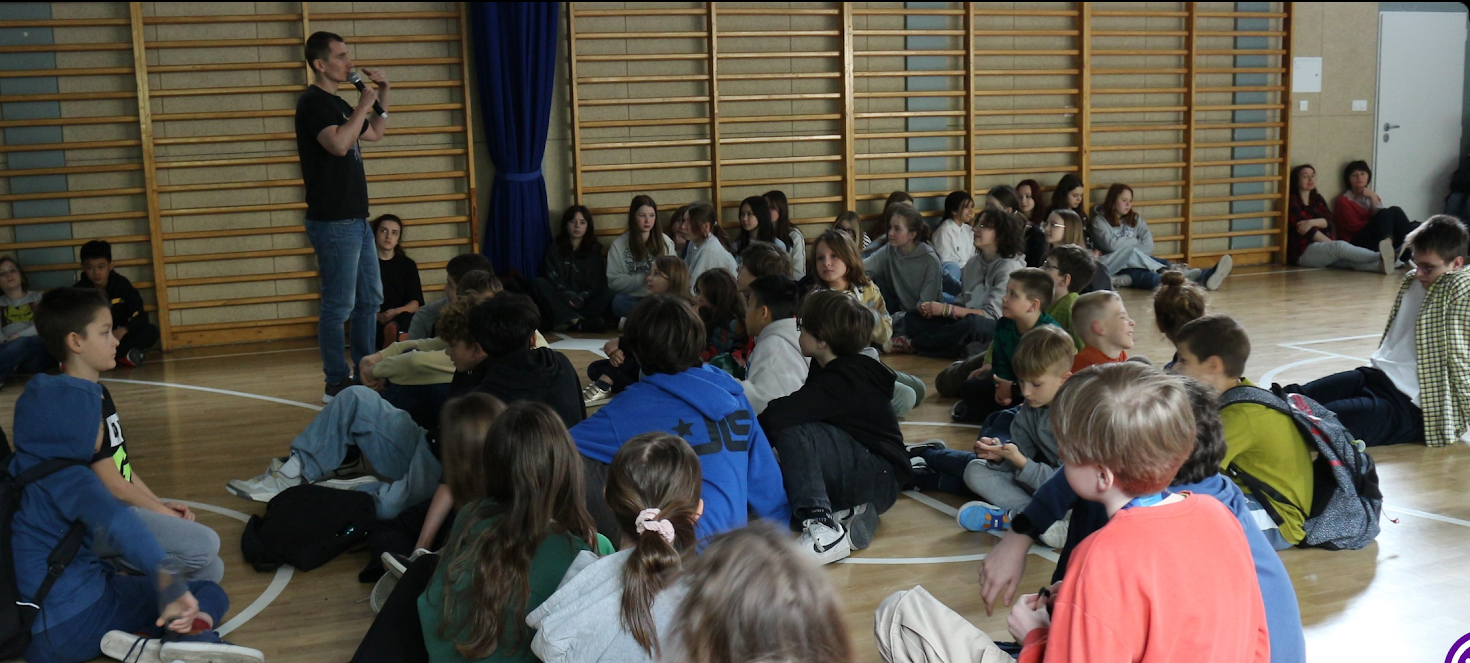Not just dinosaurs – how turtles reveal Europe’s ancient climate
Paleoclimatology studies how Earth’s climate system has changed over long timescales. As we have been able to collect data using modern instruments only for the last hundred years, natural recorders are the primary way to learn about past climate conditions. Apart from tree rings, ice cores or ocean and lake sediments, one of the important paleoclimatic indicators are … turtles!
Dr. Milan Chroust of the Institute of Paleobiology at the Polish Academy of Sciences is a paleontologist who studies ancient life and fossil organisms. His research project, Turtles from Czechia and Poland: An overview of common evolution in Central Europe since the Triassic until Recent, aims to revise fossil turtles (Testudinata) from Czechia and Poland. It reveals the past biodiversity, and our researcher is able to specify how many species lived in Central Europe, what their diet was, and also to interpret their evolutionary changes.
What may seem surprising, we know very little about the actual total diversity of turtles in Central Europe (particularly Czechia and Poland) and its changes since the Mesozoic. This is so because much historical fossil turtle material from these countries has not been revised in decades, and in some cases even in a century. Even though we can observe some progress in the understanding of evolutionary history (i.e. phylogeny) and classification of fossil turtles over the last decades, it only proves that many original identifications are dubious or invalid. Moreover, many specimens were described in local publications, which virtually excluded them from the current international English-based scientific discourse. Therefore, the actual total diversity of turtles in Central Europe and its changes since the Mesozoic still remain unknown.
But what about the turtles and climate? Dr. Chroust points out that fossil turtles are good indicators of paleoclimatic reconstructions. The novel data they provide allow us to reconstruct distinct environmental zones, the mean annual temperature, and, together with the remaining herpetological fauna, precipitation, as well. This information known as proxy climate data allows to extend the weather and climate information archive by hundreds to millions of years. The remains of turtles and other organisms buried beneath layers of sediment over time contain chemicals from the time when they originally lived. These chemicals can be analyzed to determine the water chemistry and temperature at that time. Scientists use these data and information to understand not only natural climate variability but also future climate change. According to dr. Chroust, the proper taxonomic identification of fossil turtles in Central Europe is a prerequisite for proper paleoclimatic reconstructions in that region. Taking into consideration that Czech and Polish biodiversity is today more or less similar, analogous conditions can be expected in the past. Therefore a key part of dr. Chroust’s research project is a simultaneous study of the Czech and Polish material that will allow avoiding taxonomic misidentification, as well as diagnosing specimens in a broader context.
When asked about the level of the development of his field of research in Poland compared to his country or institution, dr. Milan Chroust notices that the research on fossil vertebrates here in Poland is better developed compared to his home institution, particularly when it comes to the phylogenetic analysis and the digitizing process. In Poland, unlike in Czechia, it is a standard procedure to create 3D models of bones by several methods. Besides traditional methods, his project uses modern imaging technologies like photogrammetry or 3D surface scanners to obtain the most complete and accurate digital models, which will be shared with the international scientific community.
One of the project outcomes is the paper discussing a fossil sea turtle and a crocodylian from southern Morava, Middle Miocene in age (“Geologica Carpathica” 2024, 75, 5): https://www.sav.sk/journals/uploads/12230920GeolCarp_Vol75_No5_329_338.pdf?fbclid=IwZXh0bgNhZW0CMTAAAR3X7SI45LsbfK7fkmO8EoW37-gTzce_EYGFMDZD5EjUJWEhZRpEpF-vGbE_aem_AOBy9neo2AcJxgy364rtzg
Dr. Milan Chroust and his mentor, dr. Tomasz Szczygielski, shared their results at several international meetings in Poland, Slovakia and other countries. In Switzerland they attended the Turtle Evolution Symposium, in Fribourg. In Svalbard dr. Chroust and his colleagues from the Institute of Paleobiology attended the most important Vertebrate Palaeontology meeting of the year. He presented the results of research on Pliocene turtles from Poland. Besides lectures and workshops, the event included a field trip to see the fossil flora.

Dr. Milan Chroust presenting his research outcomes at the Turtle
Evolution Symposium, Fribourg Switzerland
During the summer of 2024, as part of his intersectoral secondment, dr. Milan Chroust visited the Safari Park Dvůr Králové, where he was responsible for taking care of dozens of turtle species, including several squamate reptiles and crocodiles. He had an opportunity to study how tortoises grow and change over their lifetimes, how they differ from one another within the same species, and how different species compare. He watched their social and daily habits, and learned what they need to thrive in various climates and to breed successfully. With his participation the Safari Park’s bone l collection was reorganized and corrected for accuracy; he also helped bring together the worlds of paleontology and zoology.

Dr. Milan Chroust’s secondment at the Safari Park Dvůr Králové
For Earth Day, Milan Chroust with his colleagues from the Institute of Paleobiology, PAS visited the Primary School No. 205 in Warsaw and presented a lecture on fossil turtles. The children joined in the discussion and were amazed by the largest turtles, some of which lived even in Poland.

Lecture on fossil turtles at Warsaw Primary School No.205
The project website https://www.paleo.pan.pl/research-department/projects/projects-turtles-from-czechia-and-poland.html provides more details on the activities of the research team.